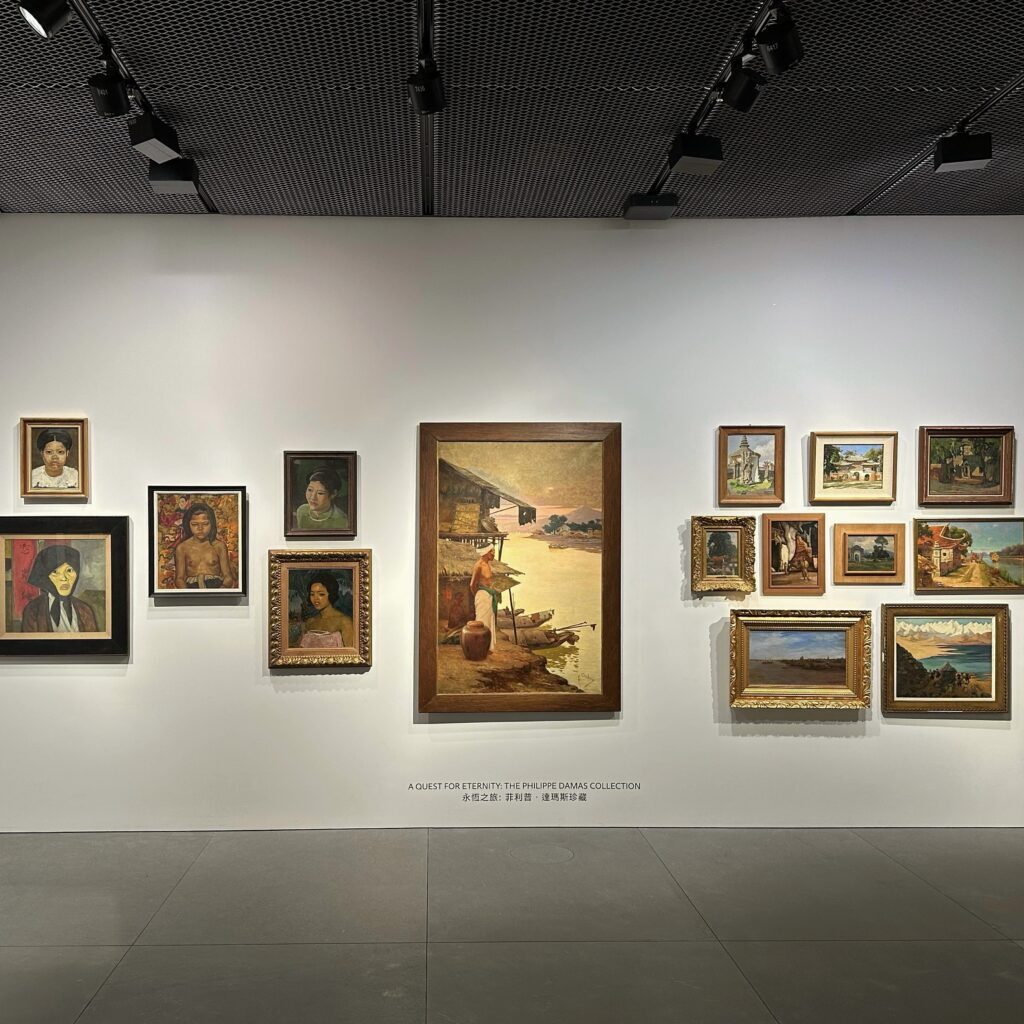
Under the title "J'ai une famille" (I have a family), the Palais de la Porte-Dorée in Paris is bringing together, until February 18, 2024, works by artists who arrived in France in the 1980s.
The "J'ai une famille" exhibition brings together ten Chinese-born artists working in France: two women and eight men. Two have now died: Chen Zhen, in 2000 from an illness he knew to be incurable, and Huang Yong Ping, victim of an accident in 2019. Most were born in the 1950s and left their country in the 1980s, before or after the Tiananmen Square demonstrations and massacre of 1989, with the exception of An Xiaotong, born in 1971 and arrived in 2002. They came to France either to complete their art studies (Yan Pei-Ming in Dijon, Jiang Dahai in Paris), or because they were invited to take part in an exhibition (Huang Yong Ping, Yang Jiechang), or to find greater freedom (Chen Zhen, Ru Xiao Fan, Du Zhenjun), or for family reasons - Shen Yuan, who was Huang Yong Ping's partner, An Xiaotong, who is Wang Du's partner, who had himself come to join his first French wife.
Also joining them in France were several members of the Star Movement, the first group to have dared, in 1979 in Beijing, to present in public paintings, engravings and sculptures freed from the norms of socialist realism and those of ancient tradition. This daring move earned them great notoriety and years of surveillance by the regime.
Thus, from the point of view of political history, we would have expected to see Wang Keping, who came to France in 1984, and Ma Desheng, who arrived in 1986. However, they are not there, nor are younger, more interesting artists such as Mengzhi Zheng, who has lived in France since 2000. The exhibition is therefore far from exhaustive. The choices of its guest curators, Evelyne Jouanno and Hou Hanru, seem to have been determined by the "family" criterion implied in the title: to bear witness to the connivances and relationships that exist or have existed between this dozen artists, some of whom had met before their departure and thus reconstituted networks of support and friendship in a country whose language they didn't speak on their arrival.
The point of view is that of biographical narrative and sociology, rather than artistic forms and meanings. These are very diverse, and the works brought together, heterogeneous. There are abstract and figurative paintings, sculpture, digital creations, installations and variations on writing. Shen Yuan has written the phrase "Elles sont parties pourtant elles n'ont nulle part où aller" ("They've left, yet they have nowhere to go") with dozens of women's shoes of various types, referring to migration and exile: it serves as the exhibition's motto.
Given the diversity of the exhibition, it would be artificial to pretend to distinguish points common to a majority of artists. Yang Jiechang because his use of the color black - ink or acrylic on paper - refers to calligraphy, and Ru Xiao Fan because his installation of porcelain monk sculptures and cooking bowls from the Song period updates ancient techniques and iconography.
But the same artist exhibits a large canvas that transforms Velasquez's masterpiece Les Ménines (1656), while Yan Pei-Ming takes on Vinci's La Joconde (1503), Wang Du Rodin's La Porte de l'Enfer (circa 1890) and Du Zhenjun Brueghel the Elder's La Tour de Babel (circa 1563): remarkable encounters across space and time.
Equally remarkable are the references to and reinterpretations of contemporary Western art. Chen Zen, Huang Yong Ping and Wang Du take the Duchampian idea of the ready-made and the practice of installation to the side of political, critical or satirical allegory, to comment on the state of the world, without illusions. This would have been the subject of several exhibitions, more structured and therefore more instructive.










